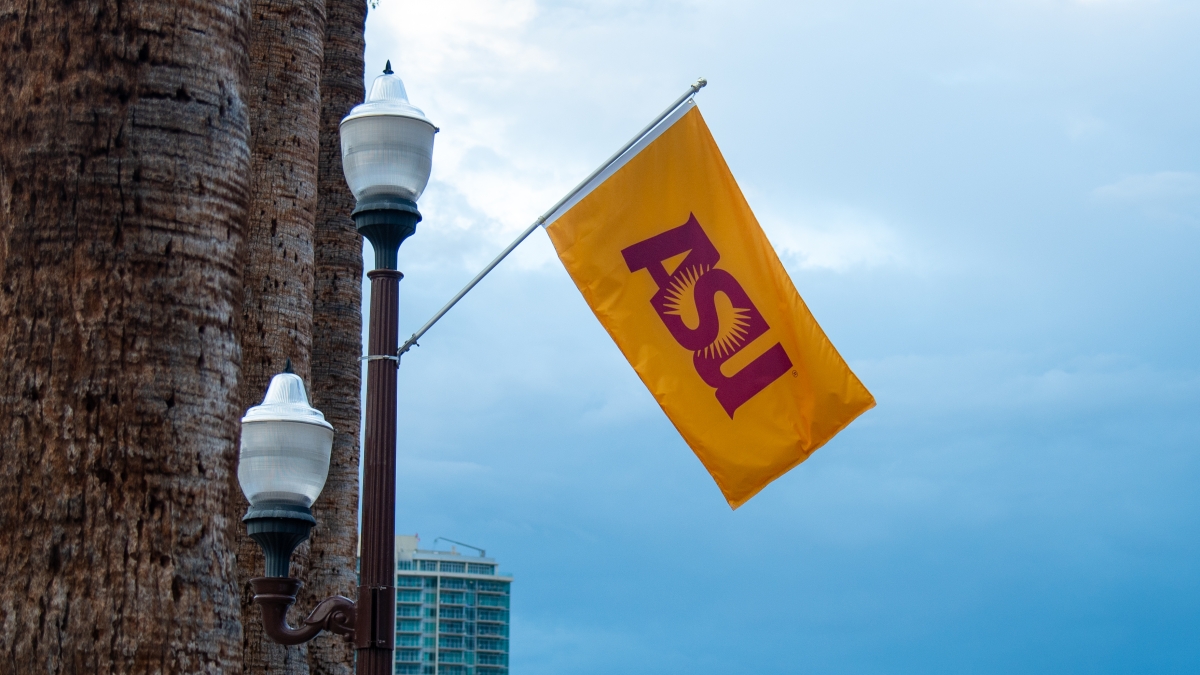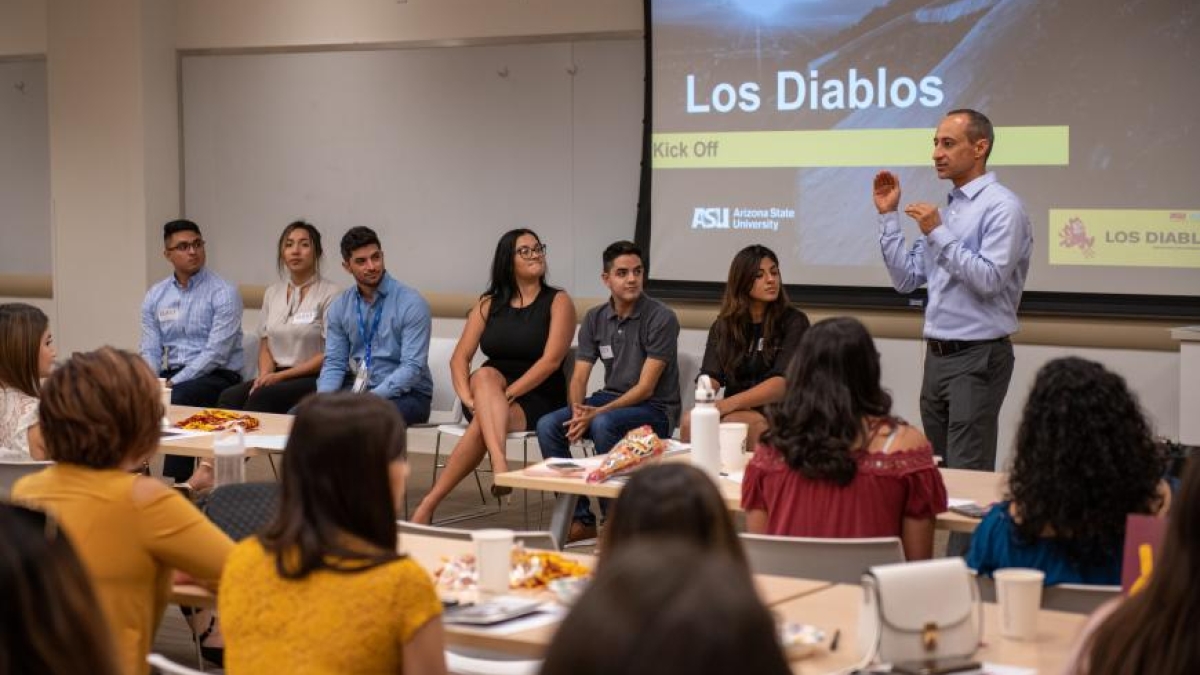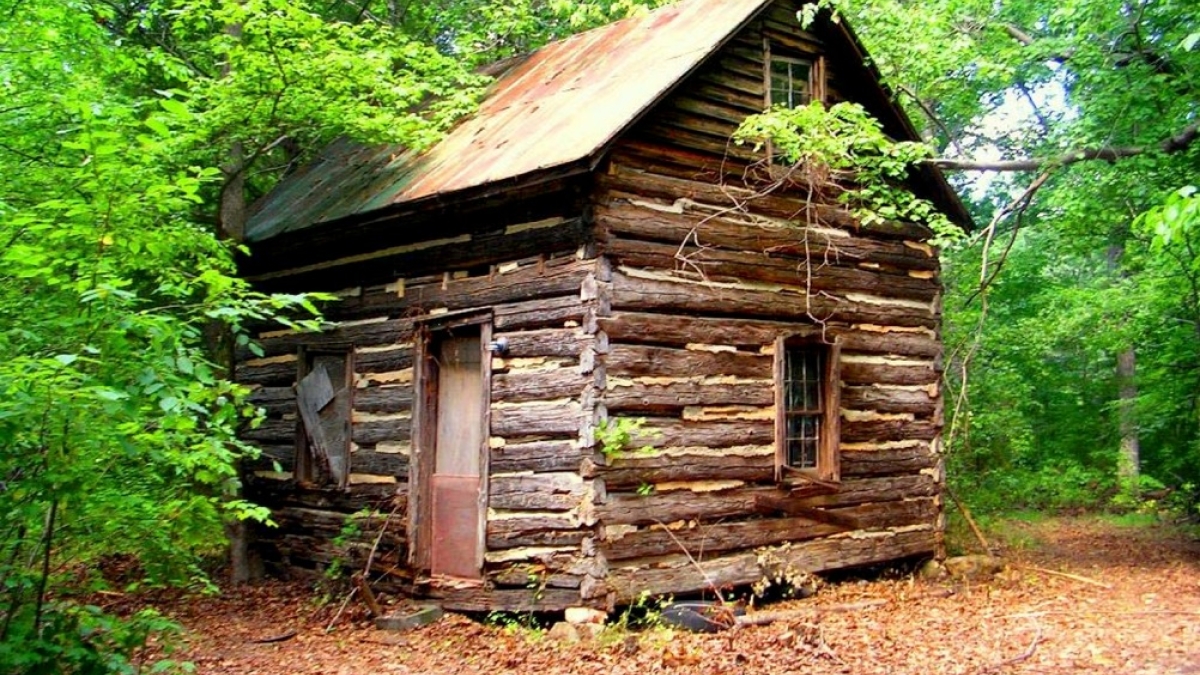The United States is a young country, but it still has its fair share of history.
Anyone who has ever taken a road trip has seen the scores of historical markers dotting the nation's highways, pointing the way to hidden treasures of America’s past.
Now, thanks in large part to the efforts of Arizona State University professor Angelita Reyes, the Parker Sydnor Log Cabin in Mecklenburg County, Virginia, is one of them.
The Civil War-era cabin stands as testament to a time in our nation’s history when newly freed African-American slaves began to establish themselves as productive members of society, serving as a home to successful tombstone carver and former slave Patrick Robert “Parker” Sydnor.

Recognizing historical sites like the cabin, which Reyes refers to as “vernacular” and “of the people,” is just as important as recognizing the more “elite” historical sites, such as George Washington’s Mount Vernon.
As the great-granddaughter of Sydnor, Reyes said the cabin has personal significance for her. Nearly a decade ago, she embarked on a mission with her family to include it on the National Register of Historic Places and the Virginia Landmarks Register. After achieving both in 2007, Reyes turned her attention to obtaining an official Virginia state historical highway marker for the cabin. That too was achieved, this past fall.
“It’s a real achievement because now we have established this public history as having national importance,” Reyes said. “It’s very important that generation after generation, no matter how humble, the memories, the way people have survived thrives.”
Reyes credits the Carnegie Humanities Investment Fund (CHIF) of ASU — which awarded her Parker Sydnor Historic Log Cabin project a $60,000 grant — with helping to advance its community, regional and national impact.
“The CHIF grant is of utmost importance,” Reyes said. “It enabled the taking of the project to the next level and the raising of visibility for the historic preservation.”
As a faculty member of ASU’s School of Social TransformationThe School of Social Transformation is an academic unit of the College of Liberal Arts and Sciences. and Department of English, Reyes teaches courses on African and African-American studies, English and women and gender studies. She relishes the opportunity to use her log cabin project as a real-world teaching tool, even if the distance between ASU and Virginia doesn’t allow for her students to be there in-person.
Tombstone carver and former slave Patrick Robert “Parker” Sydnor, whose inscriptions memorialized the lives of African Americans. This and the photo of historical marker courtesy of Angelita Reyes
“My students at ASU are involved in the project from the perspective of seeing how professors can take very academic subjects and bring them to the general public and make them usable. I’m taking history out of the classroom,” Reyes said.
“In general, people say history is a matter of knowing dates, wars, etc. What about microhistory? People who were not necessarily those big heroes or heroines throughout history? And that’s especially important in women and gender studies.”
As Reyes delved further into the history of the cabin and her own ancestral lineage, she discovered a genealogical and historical relationship to ASU: she shared ancestry with brothers Brad Sydnor and Doug Sydnor, both Scottsdale architects whose father, the late architect Reginald G. Sydnor, designed ASU’s H. B. Farmer Education Building.
“It was a fascinating story to learn that Angelita and my roots go back approximately 350 years in Virginia,” said Doug Sydnor. “When Angelita, my brother and I met for the first time, of course we were literally face to face with our ancestral lineage. Since that time I have enjoyed getting to know Angelita, realized we have some long time mutual friends in the Phoenix area, and have learned a great deal more about this very special story.”
ASU professor Angelita Reyes (far right) unveils the Parker Sydnor Historic Log Cabin highway marker. Photo courtesy of Angelita Reyes
Doug Sydnor now serves on the board of directors for the Parker Sydnor project as an architect advising and facilitating the programming, site planning, design and construction of the cabin rehabilitation, and a future visitor’s center.
At the historical highway-marker dedication ceremony in October, Reyes had the pleasure of unveiling the marker.
“It is an honor to have your historical site designated with a highway marker,” said Reyes. “People will stop, pull over, read it. And it’s not a museum; it’s a living history center.”
To read more about the Parker Sydnor Historic Log Cabin Project, click here.
To view a Youtube video of the historical highway marker dedication ceremony, click here.
Top photo: The Parker Sydnor Log Cabin in Mecklenburg County, Virginia. Photo courtesy Reyes and Reyes.
More University news

Lester Godsey joins ASU as chief information security officer
With a career spanning nearly three decades of professional IT experience, Lester Godsey is back where he first started — serving the community at Arizona State University.As a two-time ASU alum,…

ASU a top-ranked university for graduate employability
Students usually seek higher education degrees to build their skills and aptitude in their chosen vocation, and advance their life opportunities. And Arizona State University is a good place to do…

ASU Alumni Association to honor 3 outstanding alumni leaders during Homecoming
The Arizona State University Alumni Association will proudly recognize three innovative alumni leaders during the Homecoming Parade and football game against Brigham Young University on Saturday, Nov…


